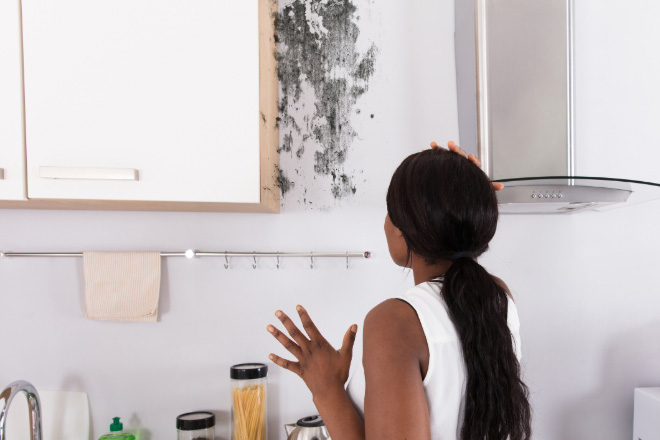In recent years, “toxic mold” has become the subject of mounting health concerns as well as numerous lawsuits. Because the scientific explanations of mold are both complex and technical, numerous misconceptions have crept into the popular perception of toxic mold and its dangers. These misconceptions only add to the widespread fear of mold at home, in schools, in the workplace, and elsewhere. And coverage in the media and on many websites has often been misleading or inaccurate. Here’s what you should know about toxic mold and how to deal with it.
What Is Mold and Where Does It Grow?
A mold is a form of fungus that grows both indoors and outdoors and thrives in warm, damp, and humid environments. There are over a thousand different varieties of indoor mold, and the good news is that the presence of a moderate amount of mold in your home is generally not harmful to your health. Most health problems related to mold exposure arise only when there is a build-up of high concentrations.
Some amount of mold is more or less everywhere all the time. Its many forms are so common and it travels so easily that trying to make your home or any other building totally mold-free would be next to impossible. But high concentrations of mold, which might result from flooding, for example, can be cleaned up and eliminated for the most part (though such cleanup may in some cases prove costly and laborious).
Because mold thrives in warm, damp, and humid places, indoor mold is most commonly found in areas of high moisture and low ventilation, such as bathrooms and basements. It is also commonly found in and around leaks in roofs, pipes, windows, or where there has been flooding. Potted plants are also a common location for mold.
In addition, mold also grows in all sorts of common building materials. It thrives in wood and wood products, paper and paper products such as wallpaper, ceiling tiles, drywall, and cardboard. It grows in fabrics such as carpets and upholstery. It can also be found in other building products including paint and insulation. It even likes dust.
What Is “Toxic Mold”?
The term “toxic mold” is somewhat misleading and has led to misunderstandings and confusion regarding the health-related dangers of mold. In high enough concentrations, all molds, toxic or otherwise, may cause health problems. As a result, some sources refer to all mold as “toxic mold.”
Strictly speaking, however, there is no such thing as toxic mold. A few forms of mold are called “toxigenic,” meaning that under certain conditions they can produce small molecular toxins, called “mycotoxins.” These mycotoxins are usually spread by way of the mold’s spores and may be the cause of potentially serious health problems if ingested in sufficient quantities over time.
In contrast with mold in general, which is to be found virtually everywhere, toxigenic molds are less common. Two of the best-known examples of so-called “toxic mold” include:
- Stachybotrys chartarum: Sometimes called S. chartarum or Stachybotrys atra, and popularly known as “black mold”. This toxigenic mold is a greenish-black fungus that requires a moist environment in which to grow and is most commonly found in flood-damaged buildings. The mycotoxins produced by Stachybotrys chartarum are potent, but there is some evidence that only a few strains of Stachybotrys chartarum are toxigenic, indicating that this particular type of “toxic mold” may be quite rare.
- Aspergillus: Aspergillus is a family of molds, and only some Aspergillus molds are toxigenic. The mycotoxins produced by toxigenic strains of Aspergillus are less potent than Stachybotrys chartarum mycotoxins, but infestations of Aspergillus mold are probably far more common. Aspergillus may be found in any of the mold-friendly environments discussed above.
How to Get Rid of Mold
As noted above, there is always a little mold present in any building, and this does not generally pose a health risk to its occupants. Once a mold infestation has been detected, however, clean-up and removal of the mold are strongly recommended, regardless of whether the mold is toxigenic or not.
- Hard surfaces: Removal of mold from hard surfaces can normally be achieved by using special cleaning methods or “protocols” developed specifically for eliminating mold. It is very important to strictly follow such cleaning protocols because of the danger of mold spores being released and spreading invisibly during cleanup.
- Porous surfaces: Where mold has infested porous or absorbent surfaces the only viable solution is removal and replacement of the material that has been infested. This includes everything from rugs to drywall, wallpaper to ceiling tiles. Where mold has penetrated behind walls and inside building materials, extensive renovations may be required.
Speak with a Gingras, Thomsen & Wachs, LLP Attorney
Have more questions about toxic mold or want to speak to an injury attorney? Contact our dedicated team of Gingras, Thomsen & Wachs, LLP today to learn more.





